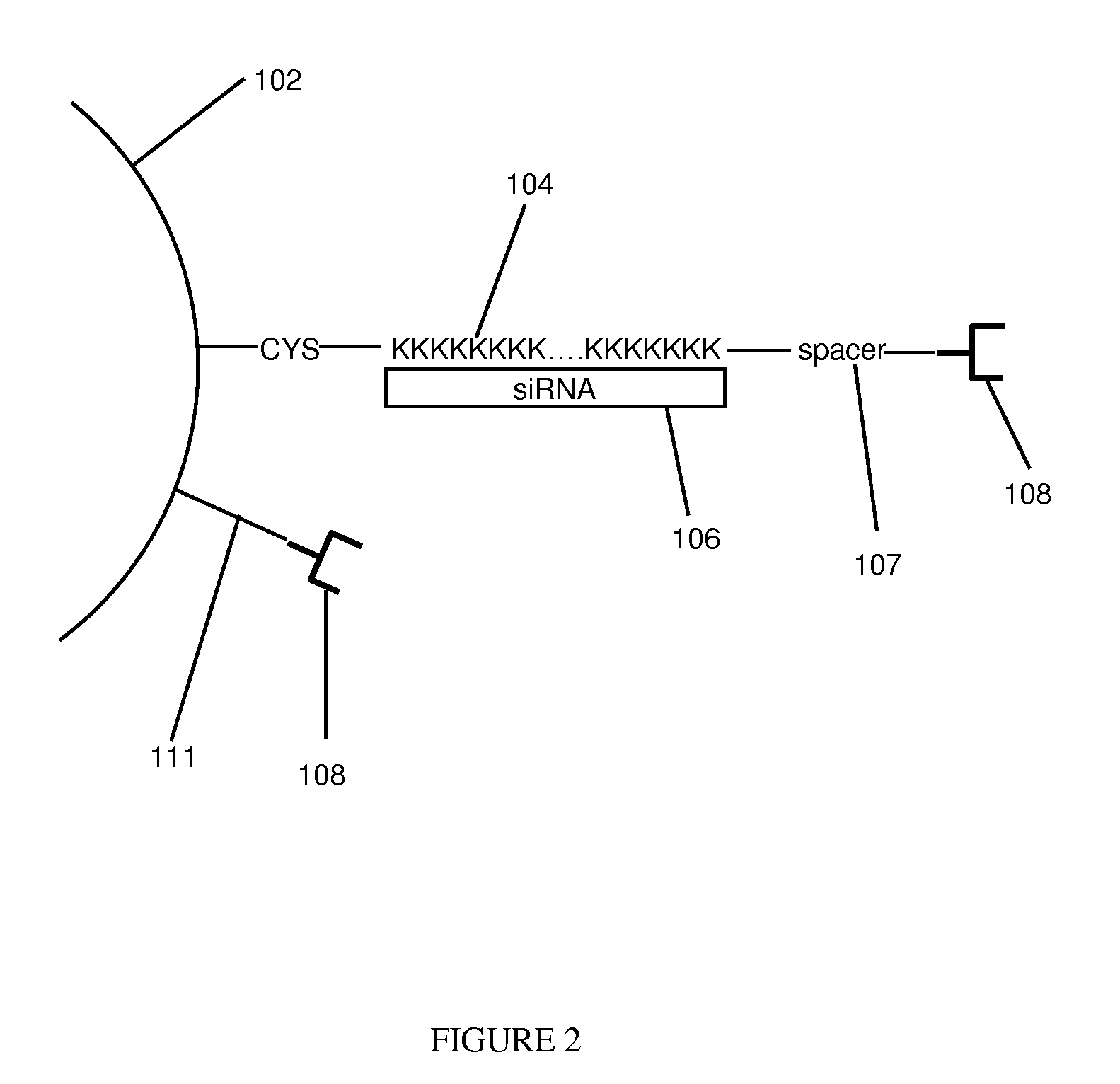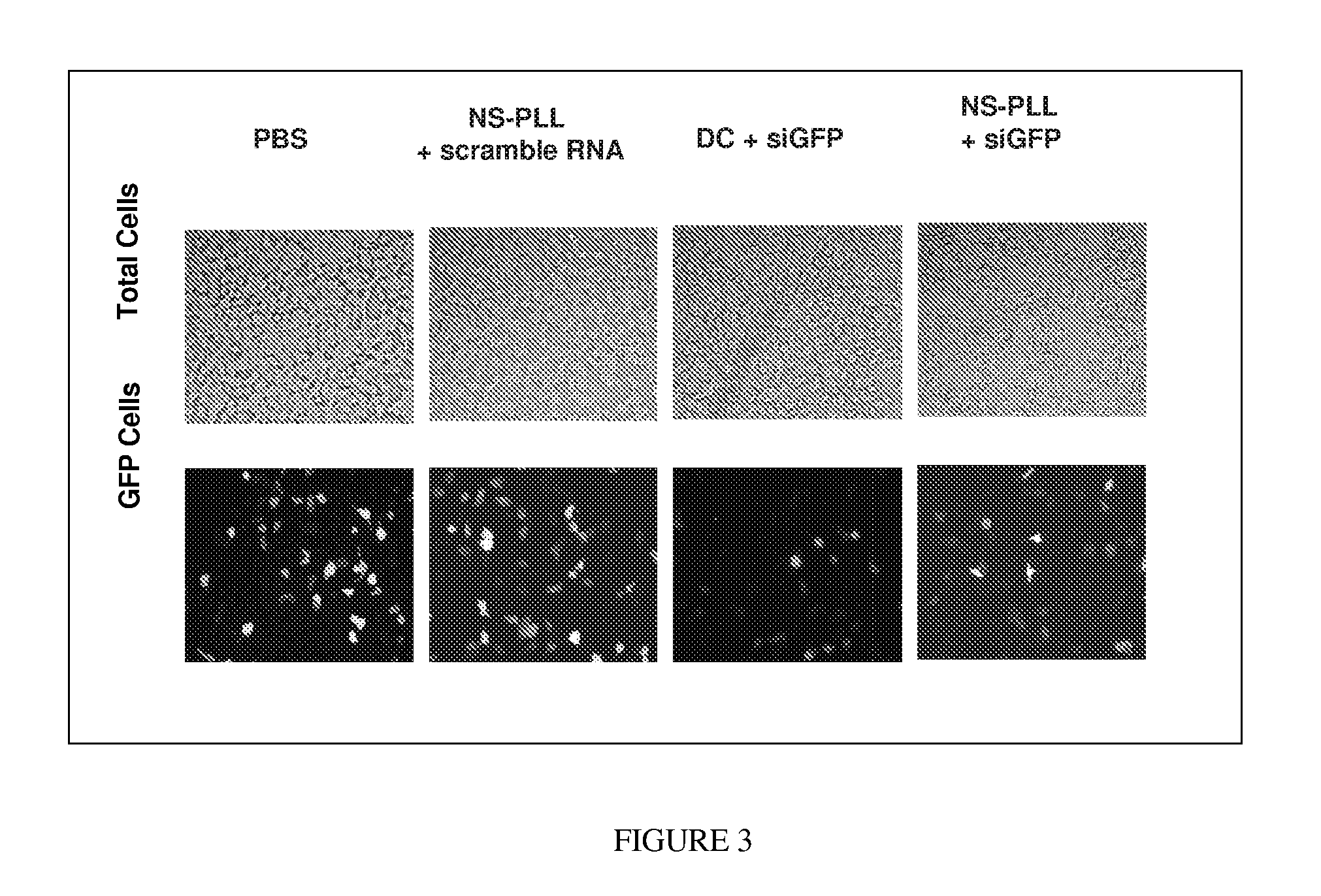Composition for Targeted Drug Delivery and Controlled Release
a technology for delivering and controlling drugs, applied in the field of drug delivery, can solve the problems of limiting the therapeutic effect of gene therapy, unable to clearly define the direct, externally controlled release mechanism of drugs, and preventing the release of drugs from the cor
- Summary
- Abstract
- Description
- Claims
- Application Information
AI Technical Summary
Benefits of technology
Problems solved by technology
Method used
Image
Examples
example
[0047]Thermolabile nanoparticles for gene delivery were synthesized using the following procedure. 2 μM of poly L-lysine was conjugated with about 10 μM of gold nanoshells. The gold nanoshells were fabricated in accordance with methods and techniques described elsewhere (see e.g., U.S. Pat. No. 6,344,272). The mixture was centrifuged and diluted for three cycles. After centrifugation and dilution about 100 nM of siRNA was added to the conjugated nanoshells. The siRNA was specific to the GFP gene. That is, the siRNA theoretically should bind to the GFP gene and prevent production of the GFP protein. The siRNA and nanoshells were allowed to incubate overnight.
[0048]The siRNA-nanoshell mixture was centrifuged and the supernatant removed to remove any siRNA which did not bind to the nanoshell conjugates. The siRNA-PLL-nanoshell precipitate was then mixed with culture medium and green fluorescent protein (GFP) transfected H1299 (a lung cancer cell line) cells, and incubated overnight.
[00...
PUM
| Property | Measurement | Unit |
|---|---|---|
| Temperature | aaaaa | aaaaa |
| Wavelength | aaaaa | aaaaa |
| Wavelength | aaaaa | aaaaa |
Abstract
Description
Claims
Application Information
 Login to View More
Login to View More - R&D
- Intellectual Property
- Life Sciences
- Materials
- Tech Scout
- Unparalleled Data Quality
- Higher Quality Content
- 60% Fewer Hallucinations
Browse by: Latest US Patents, China's latest patents, Technical Efficacy Thesaurus, Application Domain, Technology Topic, Popular Technical Reports.
© 2025 PatSnap. All rights reserved.Legal|Privacy policy|Modern Slavery Act Transparency Statement|Sitemap|About US| Contact US: help@patsnap.com



